Planning worship?
Check out our sister site, ZeteoSearch.org,
for 20+ additional resources related to your search.
- |
User Links
Person Results
‹ Return to hymnal
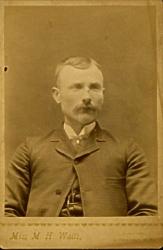
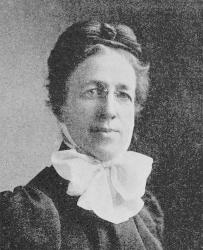
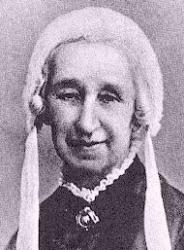

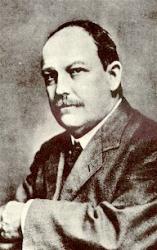
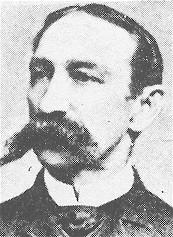

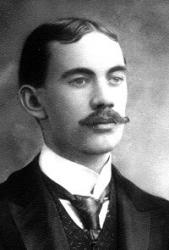

Export as CSV
John S. Norris

1844 - 1907 Person Name: J. S. Norris Hymnal Number: 59 Composer of "[I can hear my Savior calling]" in Revival Songs No. 2 Rv John Samuel Norris United Kingdom/USA 1844-1907. Born at West Cowes, Isle of Wight, UK, he emigrated to the US when young and attended school in Canada. He was ordained a Methodist minister in Oshawa, ON, in 1868. Over the next decade he pastored at churches in Canada, NY, and WI. He switched to the Congregationalist denomination in 1878, serving churches in Mondovi, Shullsburg, and Hixton, WI, and Grand Rapids, MI. From 1882 -1901 he held pastorates at Ames, Webster City, Parkersburg, Peterson, and Tripoli, IA.. He died in Chicago, IL.
John Perry
John S. Norris
Charles Dunbar
Person Name: C. R. Dunbar Hymnal Number: 58 Composer of "[My life, my love I give to Thee]" in Revival Songs No. 2
Charles Dunbar
Lucy Rider Meyer

1849 - 1922 Hymnal Number: 13 Composer of "[My scholars all for Jesus!]" in Revival Songs No. 2 Lucy Jane Rider Meyer MD USA 1849-1922. Born at New Haven, VT, she became an author, social worker, teacher, and physician. She attended the New Hampton Literary Institution (a college prep school) and the Upham Theological Seminary. She also went to Oberlin College, graduating in 1872 with her degree in literary studies. In 1873 she entered the Women’s Medical College of PA, but withdrew after two years. She intended to become a Methodist medical missionary, but changed her mind after her then-fiance died in 1875. She did not get her medical degree until 1887, when she obtained it from the Women’s Medical College of Chicago. In 1884 she taught Bible at the Dwight L Moody Young Ladies Seminary, Northfield, MA. In 1885 she met and married a Chicago Methodist pastor and businessman, Rv Josiah Shelley Meyer (1849-1926), also Assistant Secretary for the YMCA in Chicago. He had great business acumen. She called him “Papa”.. he called her “Jennie”. They had a son, Shelly. Lucy became an educator, serving as principal of the Troy Conference Academy in Poultney, VT. After studying chemistry at M.I.T. (1877-78), she became a professor of chemistry for two years at McKendree Coillege in Lebanon, IL (1879-81). She did not wish to continue teaching chemistry. She was a good illustrator and later wrote an introductory book for children about chemistry, titled ‘The fairy land of chemistry’ (1887). From 1881-1884 she served as field secretary fror the IL State Sunday School Association and attended the 1880 World Sunday School Convention in London, England. She felt that people wanting to become religious teachers needed better training. In 1885 she and her husband opened the ‘Chicago Training School for City, Home, and Foreign Missions’. She was its first principal (1885-1917) and her husband its first superintendent. The school trained young women, offering a broad curriculum of Bible study, theology, church history, economics, sociology, and basic medical training. There was some adversity to the school by outsiders, thinking a women’s place was in the home. She is credited with reviving the office of the female deacon (or deaconess) in the U.S. Methodist Episcopal Church. In faith, she was liberal, while he was more conservative, believing the Bible should be taught literally. He did most of that teaching at the school, insisting on its interpretation as written. In 1887 Meyer began preparing some women students of her school to become deacons, with a mission of working in tenement communities. She set up the Methodist Deaconess Home and appointed her former student, Isabella Thoburn, as the first house mother and superintendent, even designing a uniform for the new women deacons. In 1888 the Methodist Episcopal Church recognized the office of deaconess. A similar school was set up in Boston, MA in 1889, with another following in Toronto, Canada in 1894. They took vacations, but she preferred a wilderness environment and he did not, so they had one wilderness vacation property and later another retreat in MI, closer to Chicago, to compromise on both travel distance and environment. She edited a periodical called ‘The message’ and later changed its name to ‘The deaconess advocate’, (1884-1914). In 1889 she published a history of the female diaconate: ‘Deaconesses: Biblical, early church, European, American’. In 1908 she founded the Methodist Deaconess Association. She and her husband resigned from the Chicago Training School in 1917, having graduated over 5000 students, but thinking they could not continue with the school as their opinions for its operation were becoming more and more divergent. They moved to CA for a year and enjoyed their retirement, she suffering from several debilitating maladies, but got much of her strength back as a result. They returned to Chicago and tried to help their school in various ways for the next couple of years. Her health eventually worsened and she died. He returned to the west coast, but never really got over losing his wife. The school later merged with the Garrett Biblical Institute in Evanston, IL. She is credited with initiating 40 institutions/homes for unfortunates. She died in Chicago. She published five works.
John Perry
Lucy Rider Meyer
W. A. Hemphill
Hymnal Number: 38 Composer of "[I've seen the lightning flashing]" in Revival Songs No. 2
W. A. Hemphill
Geo. Robinson
Hymnal Number: 69 Author of "Come, Thou Fount" in Revival Songs No. 2 Sometimes attributed as the author of "Come, Thou Fount of Every Blessing"
Geo. Robinson
Frank A. Simpkins
1870 - 1939 Hymnal Number: 28 Composer of "[Behold a stranger at the door]" in Revival Songs No. 2 Simpkins, Frank Addison. (Ashterville County, Ohio, June 8, 1870--March 4, 1939, Riverside, California). His childhood home was in the vicinity of the homes of other well-known hymn writers: Philip P. Bliss, James McGranahan and Charles C. Case. These, no doubt, influenced young Frank Simpkins. His schooling included a time at the Preparatory School, Hiram College. He was a member of the Christian Church (Disciples of Christ) and traveled for a time with an evangelist. He wrote a number of hymns during the early 1900s. He entered the field of education and taught in Ohio: 1915-1916, Kinsman Township School; Music Director, 1916-1924; Assistant County Superintendent and Supervisor of Band and Orchestra in Trumbull County, 1924-1928; Music Director of Cortland Village School. He was known as the "Father of the School Band Movement in Trumbull County."
After retirement, he moved with his wife, Matilda C. Simpkins, to Riverside, California. There he met hymn-writer Carlton C. Buck, and became a member of the Church where Rev. Buck was pastor. Through this association, he renewed his interest in hymn writing.
Among his early hymns are: "Oh, for a glimpse of that city," "Scatter sunshine," "In the golden morning," "Am I ashamed of Christ?" and "I am coming, Lord, to thee." A pianist, he also wrote hymn tunes and collaborated during his retirement years on several hymns with his pastor. Among these are "Feasting in the center of His love," and the well-known "When God speaks." Funeral services were held on March 7, 1939, and in the interment was in Evergreen Cemetery at Riverside, California.
--Carlton C. Buck, DNAH Archives
Frank A. Simpkins
Jemima Luke

1813 - 1906 Hymnal Number: 52 Author of "That Sweet Story" in Revival Songs No. 2 Luke, Jemima Thompson, the wife of Rev. Samuel Luke, an Independent minister of England, was the daughter of Thomas 422 Thompson, a philanthropist, and was born at Colebrook Terrace, Islington, August 19, 1813. When only thirteen years of age she began writing for the Juvenile Magazine. She published a volume titled The Female Jesuit in 1851 and A Memoir of Eliza Ann Harris, of Clifton, in 1859, but her name is known to the Christian world almost wholly through the one hymn found in this volume. Mrs. Luke died February 2, 1906.
I think when I read that sweet 682
Hymn Writers of the Church, 1915, Charles Nutter
===============
Luke, Jemima, née Thompson, daughter of Thomas Thompson, sometime of Bath, was born at Colebrooke Terrace, Islington, Aug. 19, 1813, and was married to the late Samuel Luke, a Congregational Minister, in 1843. She was an anonymous contributor to The Juvenile Magazine at the age of 13, and subsequently pub. several works, including The Female Jesuit, 1851; A Memoir of Eliza Ann Harris, of Clifton, 1859, &c. Mrs. Luke is known to hymnody through her hymn:—
I think when I read that sweet story of old. [The Love of Jesus.] It is recorded that this hymn was composed in a stage coach in 1841, and was designed for use in the village school, near her father's seat, Poundsford Park. It was published anonymously in the Leeds Hymn Book, 1853, No. 874, in 3 stanzas of 8 lines, and has since come into use through children's hymn-books in most English-speaking countries.
--John Julian, Dictionary of Hymnology (1907)
Jemima Luke
Grace Weiser Davis

Hymnal Number: 5 Author of "There Is Glory in My Soul" in Revival Songs No. 2 Grace Weiser Davis USA 1860-1933? Born near York, PA, she married judge James Nixon Davis in 1889. They attended the Asbury United Methodist Church in York. She became a Methodist evangelist. In 1900 she moved to Jersey City, NJ. She compiled several works, including: “Gems of gospel songs” (1885), “Favorite gospel songs” (1894) with Elisha A. Hoffman, “Childhood conversions” (1897).
John Perry
Grace Weiser Davis
J. S. Fearis

1867 - 1932 Hymnal Number: 52 Composer of "[I think, when I read that sweet story of old]" in Revival Songs No. 2 John Sylvester Fearis, 1867-1932
Born: February 5, 1867, Richland, Iowa.
Died: September 2, 1932, Lake Geneva, Wisconsin.
Fearis’ father was a successful singing school teacher, and a painter by trade. At a young age, John learned to read music in his father’s classes. He was passionately fond of music, and, taking lessons on the reed organ, he was soon able to play in Sunday school and church. Later he took charge of the church choir, and taught singing classes in nearby towns. He wrote his first hymn tune at age 16. He eventually joined the editorial staff of the Choir Leader, published by the Lorenz Publishing Company in Dayton, Ohio.
Sources--
Choir Herald, December 1932, p. 219
Emurian, p. 17
Hall, pp. 393-4
Lyrics--
Brightly Beams Another Morning
Children’s Day
Show Me the Way, My Shepherd
What Comfort to Our Hearts
What Wonderful Love Is the Love
Music--
Be Thou Exalted
Beautiful Isle of Somewhere
God May Call for You
Little Raindrops
Promise Made to Mother, The
Songs in the Night
Show Me the Way, My Shepherd
There’s Light for a Step
Wherever He Leads Me I’ll Go
--hymntime.com/tch
J. S. Fearis
H. P. Danks

1834 - 1903 Hymnal Number: 9 Composer of "[Toiler, have you weary grown?]" in Revival Songs No. 2
H. P. Danks
Harriet E. Jones

1823 - 1915 Hymnal Number: 9 Author of "Keep On Praying" in Revival Songs No. 2 Harriet E. Rice Jones, 1823-1915
Born: April 18, 1823, Pompey Hollow, Onondaga County, New York.
Died: 1915, Binghamton, New York.
Buried: Oran Community Church Cemetery, Pompey, Onondaga County, New York.
Daughter of Eleazer Rice, Jones lived in Onondaga County, New York. Her girlhood was spent on a farm, receiving what education the country schools and one term at high school could provide. She was always fond of reading, and was a great singer, with a clear ringing voice. On July 7, 1844, she married a son of Rev. Zenas Jones; her husband died in 1879. Her song writing career began when her poetry came to the attention of Dr. M. J. Munger, who asked if she could write some Sunday school hymns for him. She went on to write for Daniel Towner, J. C. Ewing, the Fillmore brothers, and others.
--hymntime.com/tch
Harriet E. Jones
Kate D. Ulmer
1874 - 1950 Person Name: Kate Ulmer Hymnal Number: 10 Author of "Teach Me" in Revival Songs No. 2 Born in Pennsylvania, lived in Dauphin County Pennsylvania with her husband Benjamin E. Ulmer.
Kate D. Ulmer
Fred S. Shepard
1840 - 1907 Person Name: F. S. H. Hymnal Number: 22 Author of "Jesus Is Calling" in Revival Songs No. 2
Fred S. Shepard
Emma Pitt
b. 1846 Person Name: Mrs. Emma Pitt Hymnal Number: 39 Author of "Lost, But Jesus Saved Me" in Revival Songs No. 2 Born: 1846, Maryland.
Pitt was living in Baltimore, Maryland, by 1880, and through at least 1910. She may have died before 1920, as the daughter with whom she was living in 1910 was on her own and still single in 1920.
--www.hymntime.com
Emma Pitt
William Henry Gardner
Person Name: Wm. H. Gardner Hymnal Number: 29 Author of "Something for Thee" in Revival Songs No. 2 Late 19th Century
William Henry Gardner
Victor H. Benke

1872 - 1904 Hymnal Number: 10 Composer of "[Teach me, O Thou Holy Spirit]" in Revival Songs No. 2 Victor H. Benke was born on July 1872, Ratibor, Germany (now Racibórz, Poland). He emigrated to America at the of age 21. He served as the regular organist at the Bowery Mission in New York City for a number of years. He settled in Brooklyn where he gave piano and organ lessons and composed music. He worked with Fanny Crosby, who wrote words to a number of his pieces, and Ira Sankey. He also played the organ for Dwight Moody in his evangelistic work. Benke died on July 15, 1904 in New York. [Sources: Crosby, pp. 535, 562]
NN, Hymnary. Source: http://www.hymntime.com/tch/bio/b/e/n/benke_vh.htm
Victor H. Benke
Mrs. J. M. Hunter

1860 - 1942 Hymnal Number: 18 Author of "I Am so Happy" in Revival Songs No. 2 Laura Bell Ogilvie Hunter. Married John Madison Hunter.
Mrs. J. M. Hunter
August Halter
b. 1863 Person Name: Aug. Halter Hymnal Number: 7 Composer of "[I've found a Friend, O! such a Friend]" in Revival Songs No. 2
August Halter
James M. Dungan
1851 - 1925 Person Name: J. M. Dungan Hymnal Number: 48 Composer of "[You can make the pathway bright]" in Revival Songs No. 2 Born: Circa 1852, Indiana.
The 1880 census shows Dungan in Franklin, Indiana, with his wife Helen.
--www.hymntime.com/tch
James M. Dungan
Helen L. Dungan
b. 1855 Person Name: Helen Dungan Hymnal Number: 48 Author of "If There's Sunshine in Your Heart" in Revival Songs No. 2 [Helen L. Dungan]
Born: Circa 1855, Ohio.
The 1880 census shows Dungan living in Franklin, Indiana, with her husband James.
--www.hymntime.com/tch/
Helen L. Dungan
David Sullins
Person Name: Rev. D. S. Hymnal Number: 34 Author of "I Want to Go There" in Revival Songs No. 2
David Sullins
F. L. Snyder
Person Name: F. L. S. Hymnal Number: 37 Author of "Leaning By Faith On Him" in Revival Songs No. 2
F. L. Snyder
Melville W. Miller
Hymnal Number: 33 Author of "Cleanse Me Now" in Revival Songs No. 2
Melville W. Miller
E. H. Packard
Hymnal Number: 29 Composer of "[My talents are few, dearest Master]" in Revival Songs No. 2
E. H. Packard
Nellie A. Montgomery
Hymnal Number: 46 Author of "Songs in the Night" in Revival Songs No. 2
Nellie A. Montgomery
E. E. Satterlee
Person Name: Rev. E. E. Satterlee Hymnal Number: 42 Composer of "[There's no one like my Savior]" in Revival Songs No. 2
E. E. Satterlee
J. H. Livingstone
1746 - 1825 Person Name: John H. Livingstone Hymnal Number: 74 Author of "My soul, with humble fervor raise" in Revival Songs No. 2 Livingstone. Under this name several hymns are in Collyer's Collection, 1812. Of these "My soul, with humble fervour raise" (Praise) is still in common use.
--John Julian, Dictionary of Hymnology, Appendix, Part II (1907)
J. H. Livingstone


 My Starred Hymns
My Starred Hymns


